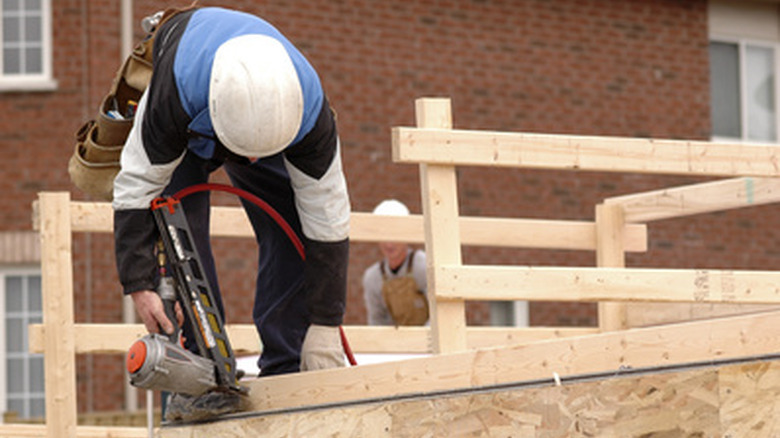Different Air Pressures For A Nail Gun
Nail guns are used for various wood construction and wood finishing projects. Nail guns operate by pushing compressed air through the gun and shooting a nail into the wood. This is much faster and easier than using conventional hand nails and a hammer. Different nail gun uses and types require different air pressures that are regulated at the air compressor, which stores the compressed air.
Framing Nail Gun
Framing nail guns require the most air pressure because they typically use 3- to 3 1/2-inch nails that are driven into framing studs during the construction process of rough framing. Typical air pressures for this application range between 130 psi (pounds per square inch) and 100 psi.
Finish Nail Gun
A finish nail gun shoots a thin brad-type nail. Typical lengths go from 3/4-inch to 2 1/2-inch nails. These nails come in two typical gauges of diameter, 16 and 18 gauge. The 18 gauge are thinner and work better for intricate moldings, while 16 gauge nails are thicker and stronger and good for typical window, door and base trim applications. These guns are used because there is no head on the nail, making a very small hole that can easily be filled with wood putty and be unnoticeable. The 16 gauge finish nailer will range from 120 psi to 60 psi. Harder woods like maple require a higher pressure than pine, which is a much softer wood.
Roofing Nail Guns
Roofing nail guns are called "coil nailers" because the nails that go into the gun come in coils and are inserted into a round housing. The nails go through the gun like a belt, preventing jamming while in use. Roofing nail guns shoot 1 1/4-inch nails to 2 1/2-inch roofing nails made of galvanized steel to secure asphalt composite shingles to a roof. The air pressure used for this is 100 psi to 90 psi. Burying the roofing nail too deep or not deep enough can affect the life of the roof, so it is very important to dial the pressure in correctly.
